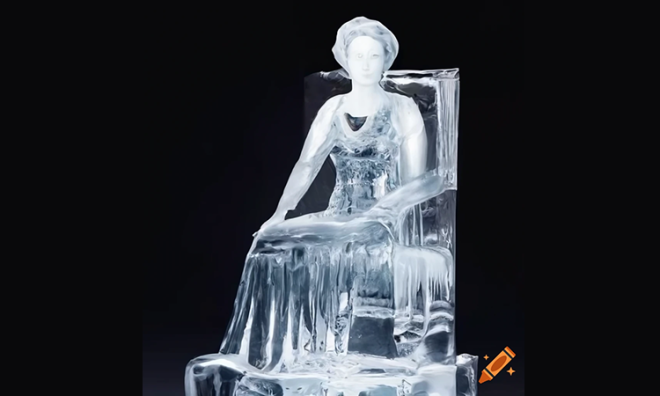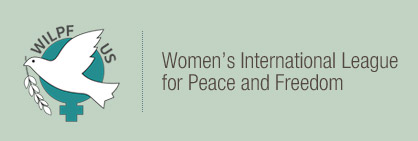No More Invisible Woman! Lessons from Hull House in Using the Media
Published on August, 14 2024
Synthetic image created by Craiyon Image Generator
by Gloria McMillan
Chicago and Tucson WILPF branches
July/August 2024
What is your mental image of Jane Addams and the residents of Hull House? Nice ladies in lace trimmed gowns and floral-bedecked hats? Not quite. Instead, think “Mad Men”, Chicago-style! The TV show “Mad Men” is set in the male-dominated world of Madison Avenue public relations and advertising that used cut-throat tactics to destroy the competition. One of the influences for the show was Edward Bernays, who was called the “father of public relations” by the New York Times in his obituary. For the residents of Hull House and their societal field experiment, Bernays’s new techniques and technologies, detailed in his books “Crystalizing Public Opinion” (1923) and “Propaganda” (1928), could be put to a much better purpose: global peace.
The PR core of Hull House wasn’t intuitive or even seemingly logical, but Bernays’s ideas influenced Hull House and Jane Addams’ work there. Indeed, Jane Addams and her Hull-House colleagues used every means at their disposal to make Hull House visible and to give the Women’s Peace Party (which later became WILPF) a leading role in society, according to Rima Lunin Schultz a highly-respected member of our Chicago WILPF branch. Schultz, a leading historian of Jane Addams and Hull-House, detailed at some length how Addams scrupulously guarded the Hull-House image, about which Schultz will explain at length in her article, “The Wife of Jane Addams”.
Addams, helped by her wealthy backers, hired a PR service for Hull House and Schultz says that Addams courted reporters. She especially made young women reporters feel welcome at Hull House. Addams gave them publicity opportunities by allowing the young women a hard-to-get by-line to interview her rather than limiting her interviews to more senior, higher-ranked (male) reporters. Today’s readers may think that Eleanor Roosevelt was the most-quoted woman in the global media and she was – later. But Jane Addams was the groundbreaker. So great was Addams’ fame and prestige that she was picked to nominate Theodore Roosevelt for President at the Progressive convention in 1912. At the time, Teddy Roosevelt was the main national defender of the rights of the poor and workers. Good old ‘big banking’ and ‘oil-trust-busting’ Teddy! Addams also sought headlines for the NAACP, which she helped to found on Lincoln’s birthday, February 12th, 1909.
Addams’s unparalleled ability to get and keep the national press’s attention as she uttered fiery denunciations of World War I violence caused the top nationally-syndicated newspaper war correspondent, Richard Harding Davis, to spit vitriol at Addams, calling her the “most dangerous”– yet probably “senile”– woman. We know they only pick on effective communicators. Still, this was an honor that Addams was not always sure she wanted.
Public relations sometimes gets written off for its low and obvious purposes, yet today’s WILPF should not write off such a powerful asset, and instead follow the example of Addams, who did not miss a ‘media hound’ trick. She used the press, courted young reporters and appeared at every public meeting and conference (like her several Chautauqua lectures) that her strength would allow. She was phenomenal, given her lifelong, painful spinal condition. And we will be surprised to note that the Hull-House residents (as staff were called) behaved like some of the most ‘gonzo’ of investigative reporters.
Florence Kelley was shot at in a factory once while she was inspecting it for child labor violations. The residents hounded slum lords, made unannounced forays into factories where child laborers were being poisoned by arsenic, and cornered the local sweatshop owners at swanky balls by getting themselves hired as serving maids. Addams herself ran for Sanitation Inspector of the Hull House ward and won. Occasionally Addams had to bail one of these enthusiastic residents out of the ‘tank’. This was Chicago, after all, and there was much to do.
So, what can we do today? There are still ways to get around blackouts and information that is being purposely withheld. We can make leaflets and carry these in our backpacks and purses, just as they did in the early days of Hull House. We can enter ‘informal spaces’ where the powerful congregate. We can get on public media boards and committees that control the flow of information to the citizens. We can pursue environmental and housing justice just as they did at Hull-House by allying our efforts with the local residents’ committees.
The more we do with media, the less WILPF is ‘The Invisible Woman’, we sometimes have become. Jane Addams and Hull House’s names are beginning to fade even in Chicago. We can take a lesson from those glory days, pick up some young members and get on with the work that they began with a real burst of razzamatazz. Life can be both fun and scary. History can certainly be surprising. Jane Addams was a Chicago style ‘Mad (Wo)man,’ —who knew? Those Hull House women would simply smile and say, “Go for it, WILPF!”



